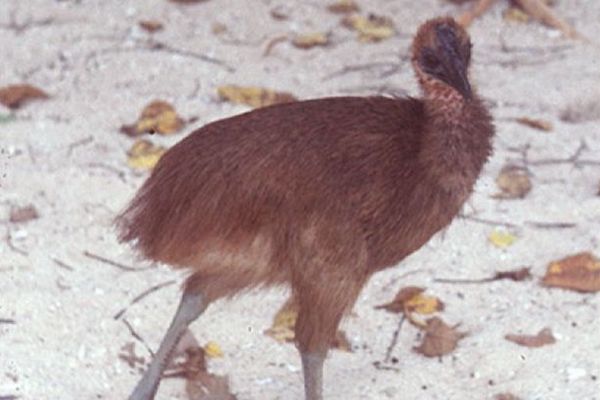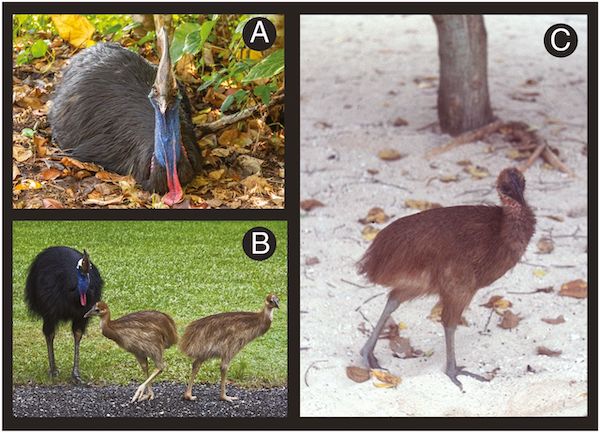Don't miss the latest stories
Humans Kept World’s Most Dangerous Bird As Pets, Not Minding They Were Deadly
By Ell Ko, 12 Oct 2021
Subscribe to newsletter
Like us on Facebook

Image via Douglass et. al
Having a bird as a pet nowadays might bring to mind the image of a pleasant, brightly-colored budgie, or maybe a parrot who’s capable of repeating some funny phrases. Chickens, perhaps, or a rooster whose morning crow is, while jarring, still harmless.
You might not really think of the cassowary, a seemingly perpetually infuriated bird who could effortlessly commit homicide in a matter of seconds.
The San Diego Zoo explores this “most dangerous bird in the world” in a bit more detail. Native to Northern Australia and New Guinea, the flightless bird is tall and has somewhat of a “helmet” on its head made of keratin.
Also, it sports four inches of claws on each foot. This, combined with the fact that it’s the second heaviest bird in the world just shy of the ostrich, makes it capable of “slic[ing] open any… potential thread with a single swift kick.”

(A) Male cassowary; (B) Male cassowary and two young cassowaries; (C) young cassowary chick.
Image via Douglass et. al
But according to new research published in the Proceedings of the National Academy of Science this week, a cassowary is apparently known to be one of the first animals domesticated and raised by humans around 18,000 years ago.
As pointed out by Kristina Douglass of Penn State University, the study’s co-author, this came thousands of years before humans even began to domesticate chickens. “And this is not some small fowl,” she says. “It is a huge, ornery, flightless bird that can eviscerate you.”
This could be due to imprinting, a behavior known in cassowary chicks. A newborn chicken tends to decide that the very first thing it sees is, in fact, its mother. If it happens to be a human, well, good luck with that. You’re a cassowary mother now.
In the study, more than 1,000 cassowary eggshell fragments were analyzed with 3D laser microscopes. These date back to between 6,000 to 18,000 years ago.
The team’s findings indicated that some eggshells were broken “prematurely,” suggesting that the people were eating developing egg embryos, otherwise known as balut. However, other evidence suggests that some eventually hatched and were taken to be raised by humans, so not all of them were collected with the intention to eat them.
Due to the process of hatching and raising the chicks, the eggs would’ve needed to be retrieved from a nest. This raises another question: nests are usually guarded by an equally deadly male cassowary, so how did humans get them?
Unfortunately, the answers for this one don’t lie in the eggshell.
[via USA Today, image via Douglass et. al]
Receive interesting stories like this one in your inbox
Also check out these recent news





